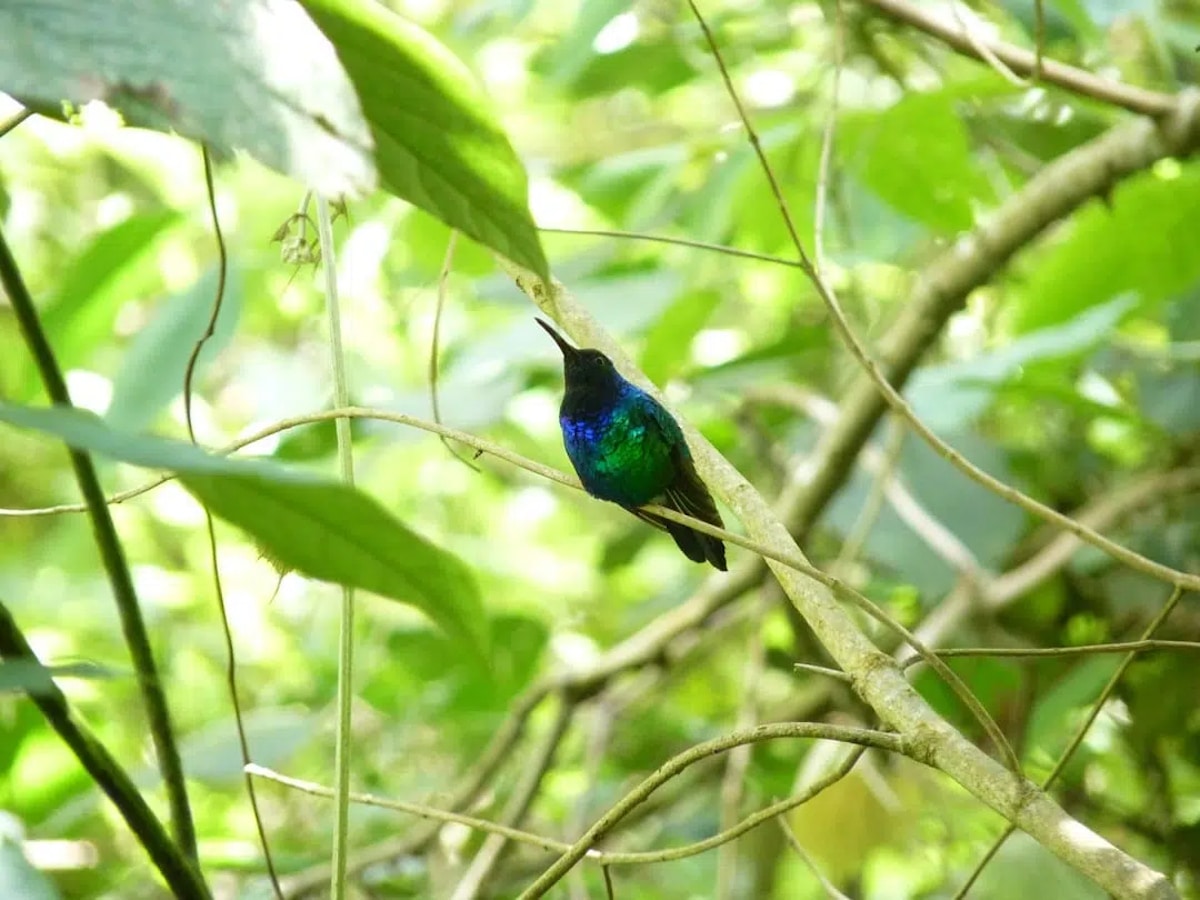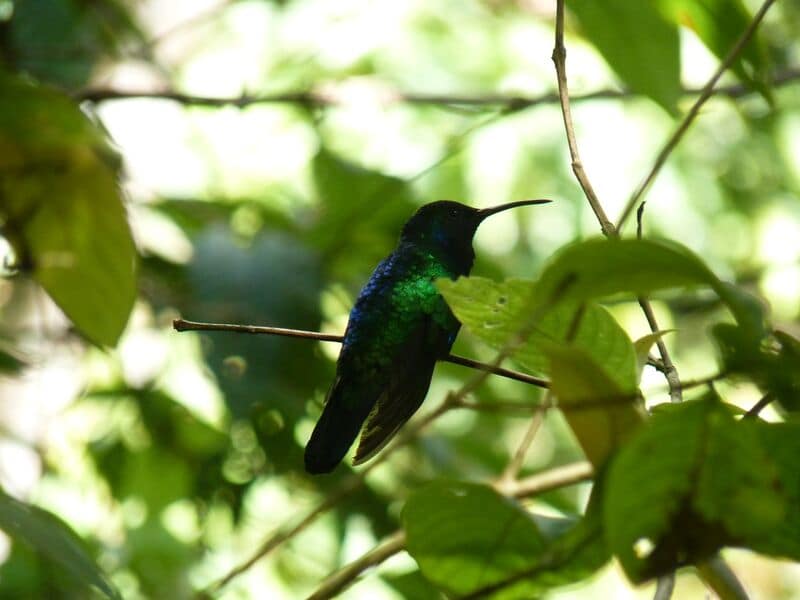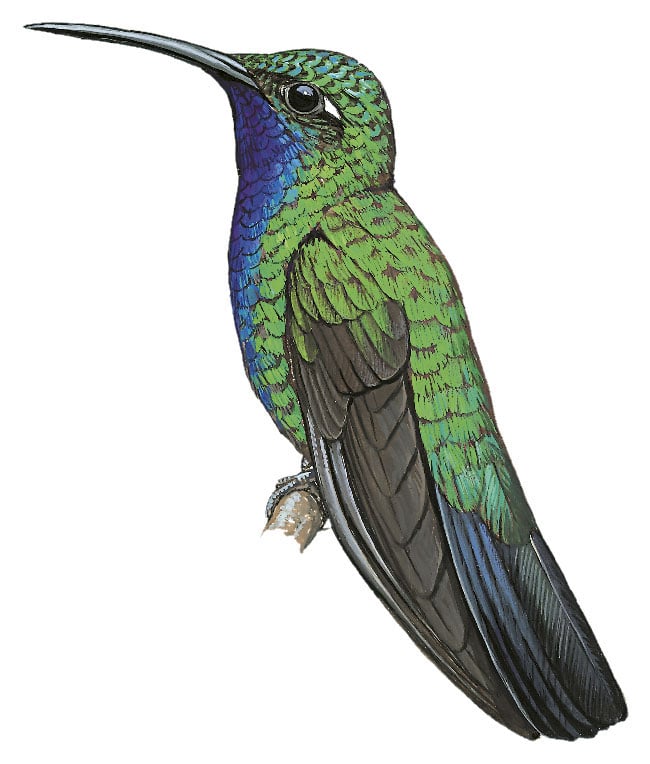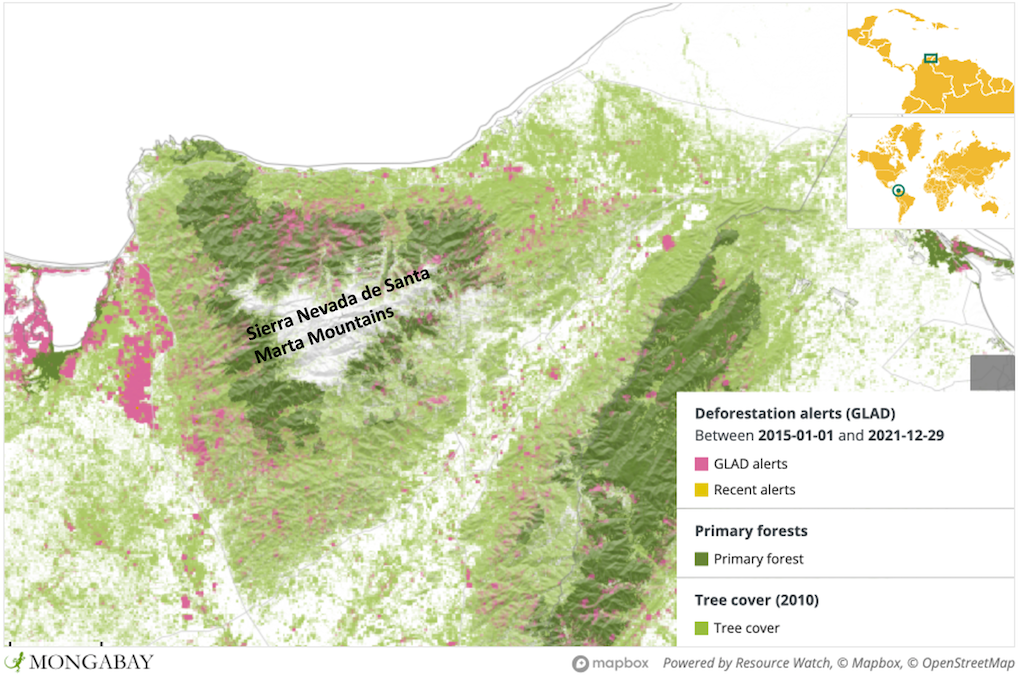Emerald Green Hummingbird Deemed ‘Lost to Science’ Reemerges in Colombia

 Why you can trust us
Why you can trust us
Founded in 2005 as an Ohio-based environmental newspaper, EcoWatch is a digital platform dedicated to publishing quality, science-based content on environmental issues, causes, and solutions.
By Liz Kimbrough
In the mountains of Colombia, an experienced bird-watcher saw an iridescent flash of blue and green. “A hummingbird caught my attention. I got out my binoculars and was shocked to see that it was a Santa Marta sabrewing,” Yurgen Vega said. “This sighting was a complete surprise, but a very welcome one.”
This was only the second time the critically endangered hummingbird has had a documented sighting since 1946. The last bird was spotted in 2010.
“It’s like seeing a phantom,” said John C. Mittermeier, director of threatened species outreach at the American Bird Conservancy.

Vega, who found the bird while working with the conservation organizations Selva, ProCAT Colombia and the World Parrot Trust to survey endemic birds in Colombia’s Sierra Nevada de Santa Marta region, spotted the male Santa Marta sabrewing (Campylopterus phainopeplus) and identified it on sight by its green feathers, iridescent blue throat and black curved bill.
“When I first saw the hummingbird I immediately thought of the Santa Marta sabrewing. I couldn’t believe it was waiting there for me to take out my camera and start shooting,” Vega told The Guardian. “I was almost convinced it was the species, but because I felt so overcome by emotion, I preferred to be cautious; it could’ve been the Lazuline sabrewing [Campylopterus falcatus], which is often confused with Santa Marta sabrewing. But once we saw the pictures, we knew it was true.”
Ornithologists have been on high alert for the Santa Marta sabrewing, which is listed as one of the top 10 most-wanted lost birds by the Search for Lost Birds, a collaboration between Re:wild, the American Bird Conservancy and BirdLife International. None of the most-wanted birds have had a documented sighting in the wild in at least 10 years, and all (now with the exception of the sabrewing) are considered lost to science. Many of these lost birds are native to areas rich in biodiversity that also urgently need protection and conservation efforts.

“When we announced the top 10 most-wanted lost birds last year, we hoped that it would inspire birders to look for these species,” Mittermeier said. “And as this rediscovery shows, sometimes lost species reemerge when we least expect it. Hopefully rediscoveries like this will inspire conservation action.”
Not much is known about the Santa Marta sabrewing. It lives in mid-elevation humid tropical forests and is thought to be migratory, traveling to higher elevations in the paramo, an area of grass and shrubs, to find flowering plants to feed on in the rainy season. The population of Santa Marta sabrewings in the Sierra Nevada de Santa Marta, researchers believe, is small and dwindling.

Only around 15% of forests in the Santa Marta mountains are still standing, scientists estimate. The rest was cleared to make way for agriculture and development. The Santa Marta sabrewing was found in an area of forest in the Santa Marta mountains with no protection.
“[This] means that it is critically important for conservationists, local communities and government institutions to work together to learn more about the hummingbirds and protect them and their habitat before it’s too late,” Esteban Botero-Delgadillo, director of conservation science with SELVA: Research for Conservation in the Neotropics, said in a statement.
Scientists now plan to search for more individuals and stable populations of the species to understand where they live and what threats they face in the wild.
“The Sierra Nevada de Santa Marta is so incredibly biodiverse and harbors so many amazing endemic species,” said Lina Valencia, Andean countries coordinator at Re:wild. “It’s hugely exciting to have proof that the Santa Marta sabrewing is still living in the mountains. We still have time to save it.”
Liz Kimbrough is a staff writer for Mongabay. Find her on Twitter @lizkimbrough
Reposted with permission from Mongabay.
Subscribe to get exclusive updates in our daily newsletter!
By signing up, you agree to the Terms of Use and Privacy Policy & to receive electronic communications from EcoWatch Media Group, which may include marketing promotions, advertisements and sponsored content.

 233k
233k  41k
41k  Subscribe
Subscribe 



